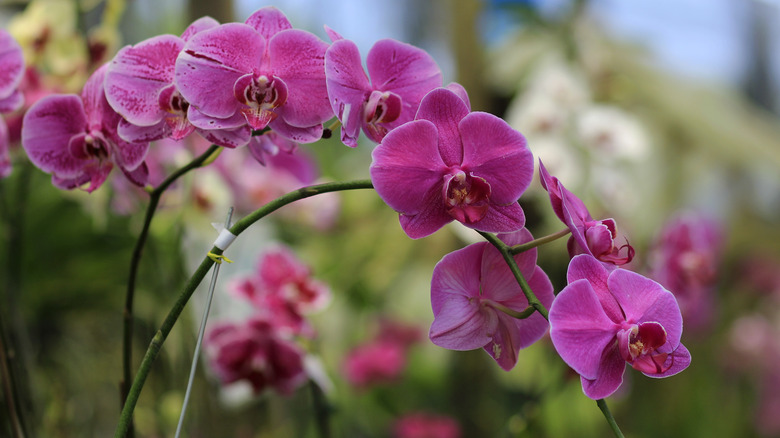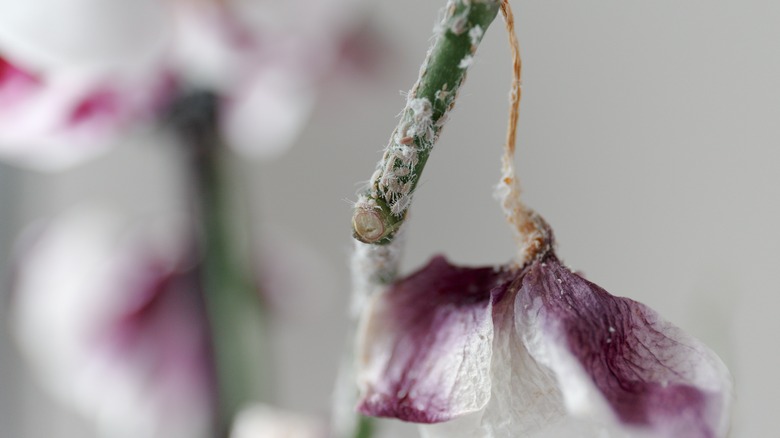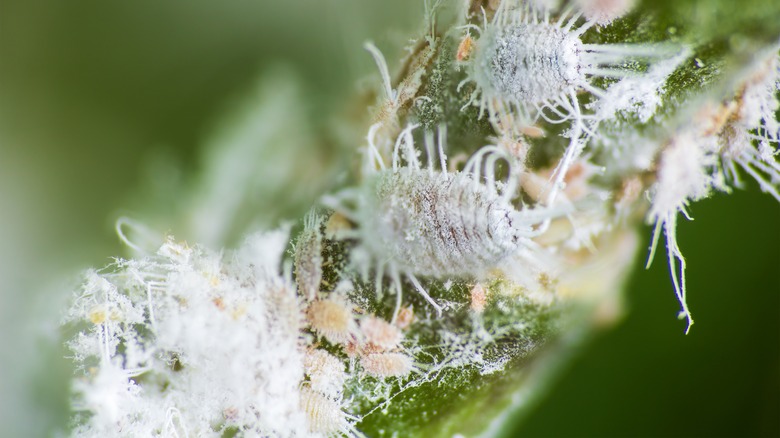The Crucial Task You Shouldn't Skip When Bringing An Orchid Indoors For Winter
Orchids are beautiful, sculptural flowers that add a little something special to a room. But they're not just for adorning your kitchen island or entryway table. They also look great outside, whether set up on a patio side table or accenting an outdoor bar. It's perfectly safe to leave your orchids outside, just as long as they're put in a shady spot and are watered appropriately to combat the heat. However, when fall rolls around, you don't want to just march your bloom back into your house. Since it was exposed to the elements — and all the bugs living in your backyard — you want to check your orchid for mealybugs before bringing it in.
Mealybugs are a common ailment for these tropical flowers, so thoroughly check your orchid's leaves, roots, and stems before bringing them back indoors. These troublesome bugs could land on your flower in a multitude of ways. They could have hopped over from another infected plant outside or hitched a ride on a breeze and landed on your orchid. Here is why it's important you check for an infestation before bringing it indoors.
Why you should check for a mealybug infestation before bringing in your orchid
Mealybugs are notoriously difficult to control and eradicate. Because of this, you don't want to bring them indoors at the risk of infecting your other plants. Chances are that your orchid isn't your only potted plant in the house. These pests like to move — hopping over to a neighboring pot or even floating on an air current produced by your central air. Because of this, they can get pretty far, possibly even infecting plants in different rooms. And they aren't picky on where they land — mealybugs can infest anything from ferns and palms to cacti and potted herbs.
Once they invade your home, they will be difficult to remove. Insecticides typically don't work thanks to their waxy bodies, which means you have to try home remedies such as rubbing alcohol to get rid of them. However, that usually proves to be difficult thanks to the fact they love to burrow in hard-to-reach places, which means you might not get them all — making them reappear over and over. That's why you must inspect your orchid.
How to inspect your orchid
First, you need to know what these pests look like. Mealybugs have oval-shaped bodies and wrap themselves in a soft-looking white wax. The wax is usually splotchy, with the outer edges giving the appearance of tiny insect legs or antennas. They can be as small as 1/20th of an inch, but you will often find many of them clustering together.
When looking for mealybugs, first start in the obvious spots. For orchids, that would be on the underside of leaves, on stems, and even their petals. However, keep in mind, that they love to embed themselves in cracks and crevices, so just because those places are clean doesn't mean your orchid isn't infected. After that initial sweep, also check the roots, moss medium, and the underside of your planter lip. If you find that your plant is infected, leave it outside and treat it with 70% rubbing alcohol. Add it to a cotton ball and wipe the plant down with the solution. Do this several times a week until you rid your plant of mealybugs. If it is heavily infected, you will need to unfortunately dispose of the plant, so as not to spread the infestation.


